Decks¶
The Decks feature enables you to obtain customizable and default visibility into your tasks. Think of it as a visualization tool that you can utilize within your Flyte tasks.
Decks are equipped with a variety of renderers, such as FrameRenderer and MarkdownRenderer. These renderers produce HTML files. As an example, FrameRenderer transforms a DataFrame into an HTML table, and MarkdownRenderer converts Markdown text into HTML.
Each task has a minimum of three decks: input, output and default. The input/output decks are used to render the input/output data of tasks, while the default deck can be used to render line plots, scatter plots or Markdown text. Additionally, you can create new decks to render your data using custom renderers.
Note
Flyte Decks is an opt-in feature; to enable it, set enable_deck to True in the task parameters.
Note
To clone and run the example code on this page, see the Flytesnacks repo.
To begin, import the dependencies:
import flytekit
from flytekit import ImageSpec, task
from flytekitplugins.deck.renderer import MarkdownRenderer
from sklearn.decomposition import PCA
We create a new deck named pca and render Markdown content along with a
PCA plot.
You can begin by initializing an ImageSpec object to encompass all the necessary dependencies. This approach automatically triggers a Docker build, alleviating the need for you to manually create a Docker image.
custom_image = ImageSpec(packages=["plotly"], registry="ghcr.io/flyteorg")
if custom_image.is_container():
import plotly
import plotly.express as px
Important
Replace ghcr.io/flyteorg with a container registry you’ve access to publish to.
To upload the image to the local registry in the demo cluster, indicate the registry as localhost:30000.
Note the usage of append to append the Plotly deck to the Markdown deck.
@task(enable_deck=True, container_image=custom_image)
def pca_plot():
iris_df = px.data.iris()
X = iris_df[["sepal_length", "sepal_width", "petal_length", "petal_width"]]
pca = PCA(n_components=3)
components = pca.fit_transform(X)
total_var = pca.explained_variance_ratio_.sum() * 100
fig = px.scatter_3d(
components,
x=0,
y=1,
z=2,
color=iris_df["species"],
title=f"Total Explained Variance: {total_var:.2f}%",
labels={"0": "PC 1", "1": "PC 2", "2": "PC 3"},
)
main_deck = flytekit.Deck("pca", MarkdownRenderer().to_html("### Principal Component Analysis"))
main_deck.append(plotly.io.to_html(fig))
Important
To view the log output locally, the FLYTE_SDK_LOGGING_LEVEL environment variable should be set to 20.
The following is the expected output containing the path to the deck.html file:
{"asctime": "2023-07-11 13:16:04,558", "name": "flytekit", "levelname": "INFO", "message": "pca_plot task creates flyte deck html to file:///var/folders/6f/xcgm46ds59j7g__gfxmkgdf80000gn/T/flyte-0_8qfjdd/sandbox/local_flytekit/c085853af5a175edb17b11cd338cbd61/deck.html"}
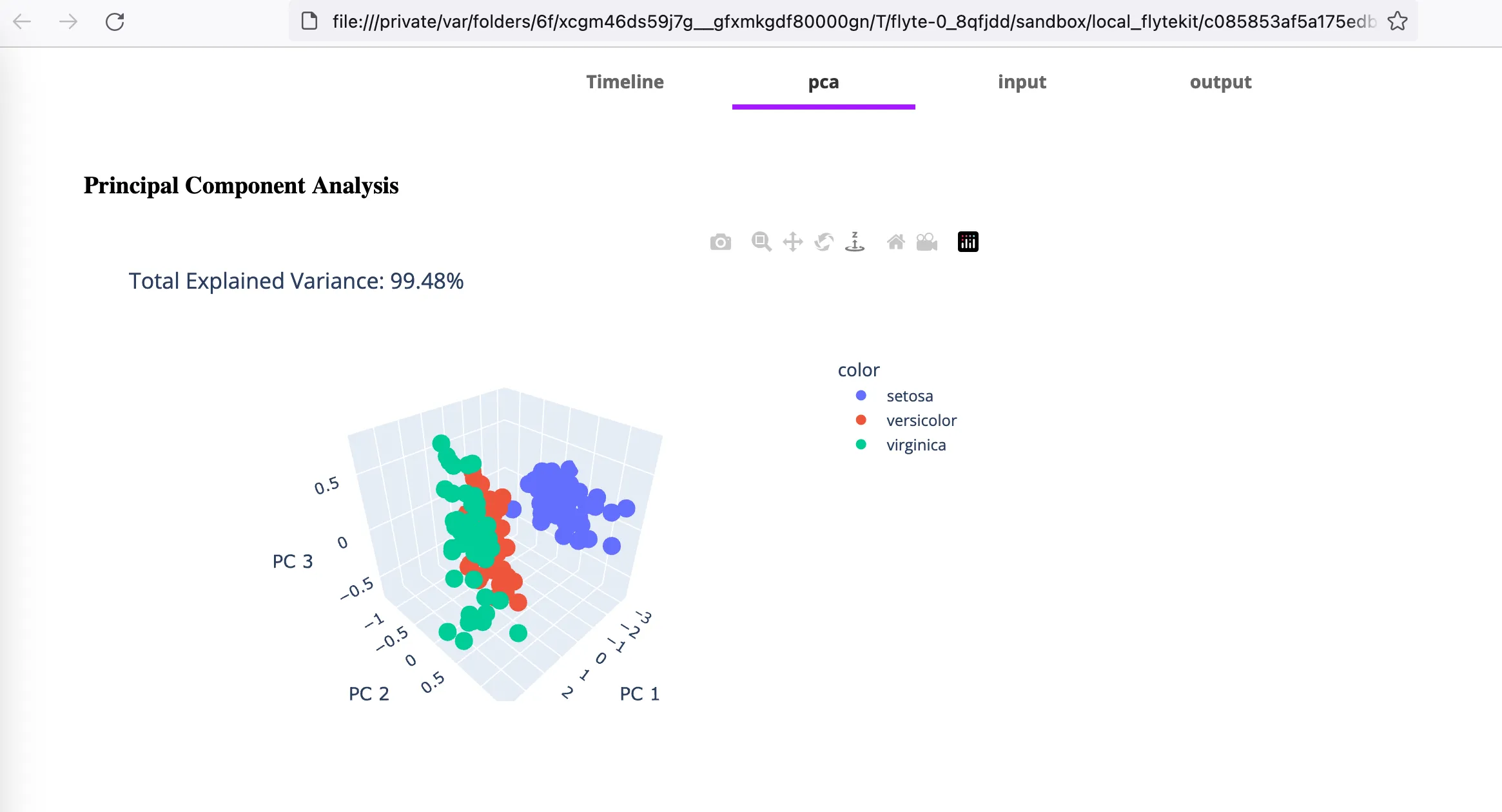
Once you execute this task on the Flyte cluster, you can access the deck by clicking the Flyte Deck button:
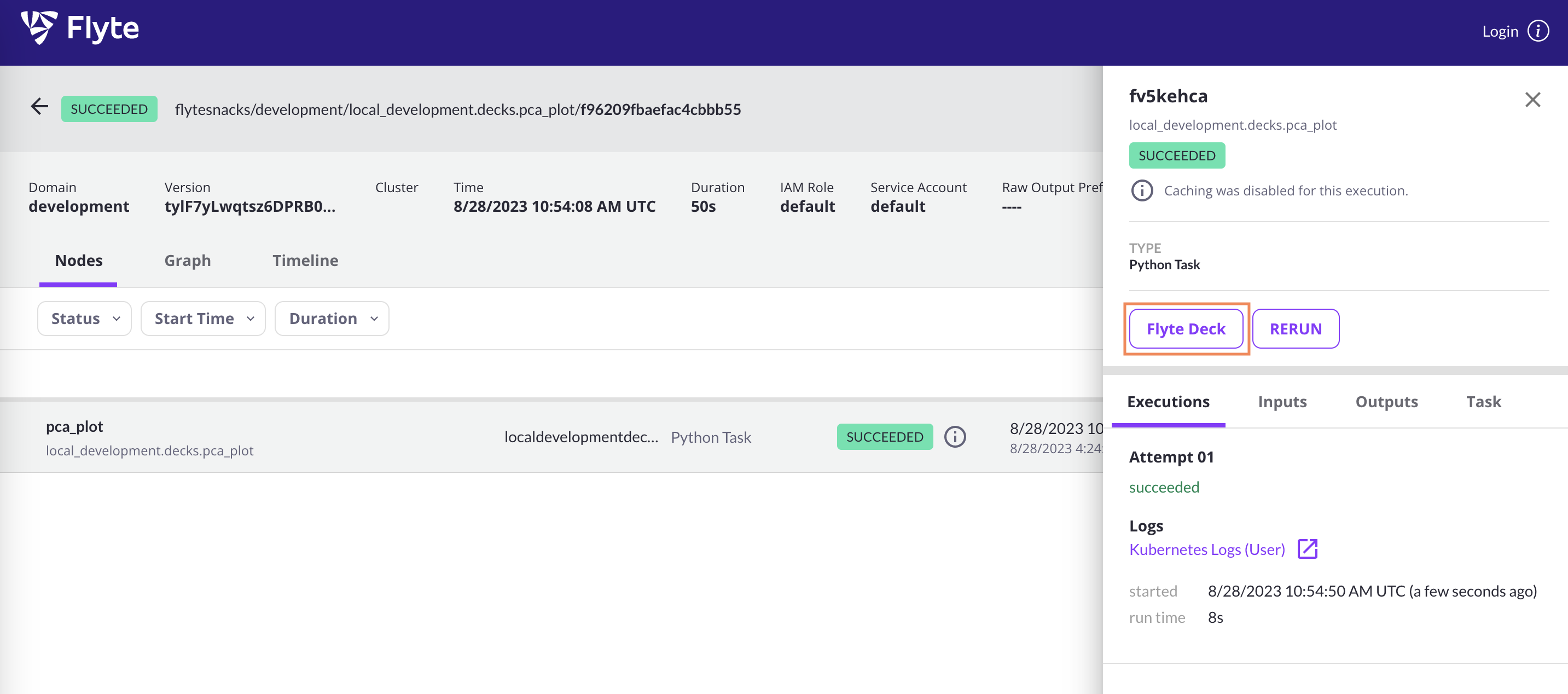
Deck renderer¶
The Deck renderer is an integral component of the Deck plugin, which offers both default and personalized task visibility. Within the Deck, an array of renderers is present, responsible for generating HTML files.
These renderers showcase HTML in the user interface, facilitating the visualization and documentation of task-associated data.
In the Flyte context, a collection of deck objects is stored. When the task connected with a deck object is executed, these objects employ renderers to transform data into HTML files.
Available renderers¶
Frame renderer¶
Creates a profile report from a Pandas DataFrame.
import pandas as pd
from flytekitplugins.deck.renderer import FrameProfilingRenderer
@task(enable_deck=True)
def frame_renderer() -> None:
df = pd.DataFrame(data={"col1": [1, 2], "col2": [3, 4]})
flytekit.Deck("Frame Renderer", FrameProfilingRenderer().to_html(df=df))
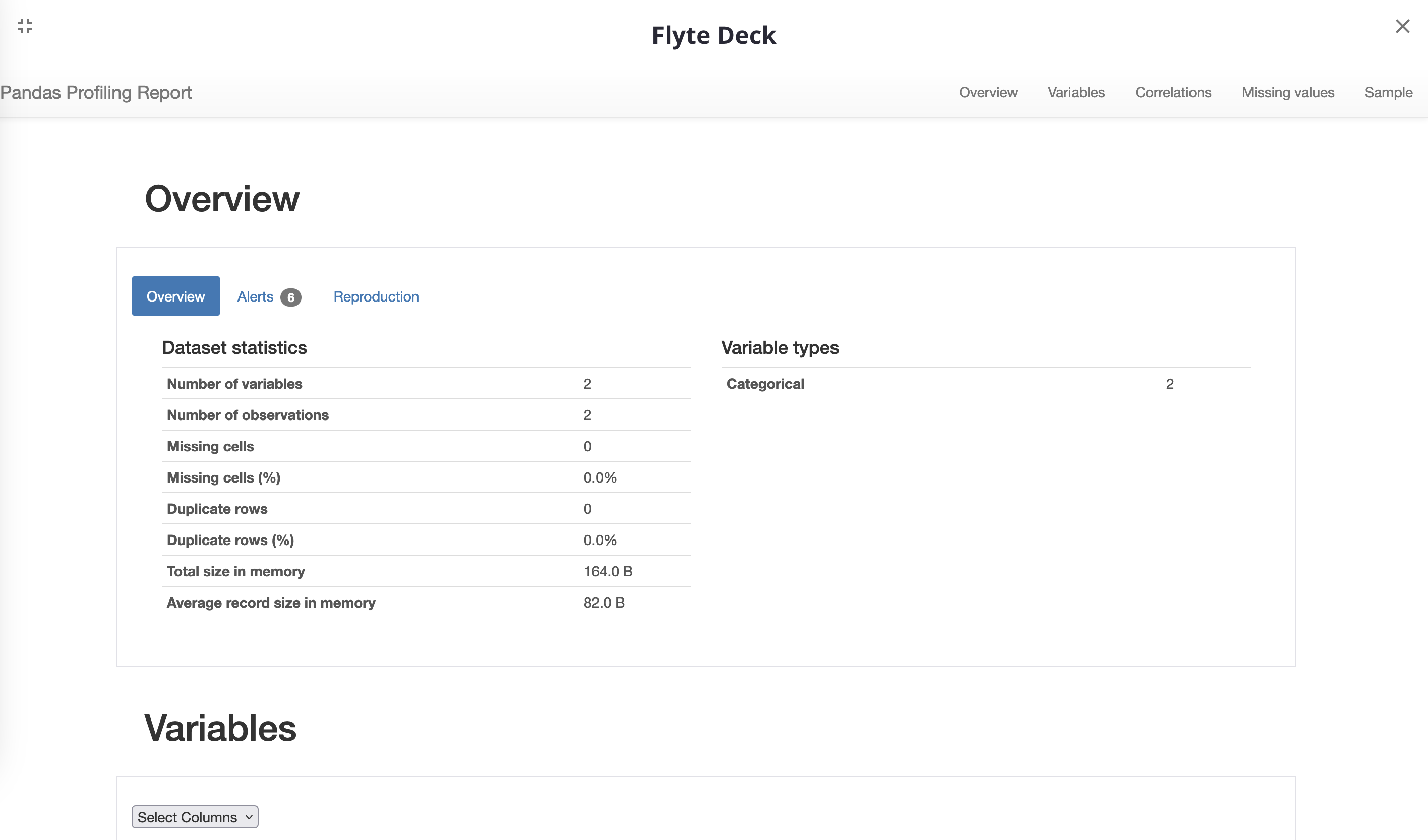
Top-frame renderer¶
Renders DataFrame as an HTML table. This renderer doesn’t necessitate plugin installation since it’s accessible within the flytekit library.
from typing import Annotated
from flytekit.deck import TopFrameRenderer
@task(enable_deck=True)
def top_frame_renderer() -> Annotated[pd.DataFrame, TopFrameRenderer(1)]:
return pd.DataFrame(data={"col1": [1, 2], "col2": [3, 4]})

Markdown renderer¶
Converts a Markdown string into HTML, producing HTML as a Unicode string.
@task(enable_deck=True)
def markdown_renderer() -> None:
flytekit.current_context().default_deck.append(
MarkdownRenderer().to_html("You can install flytekit using this command: ```import flytekit```")
)
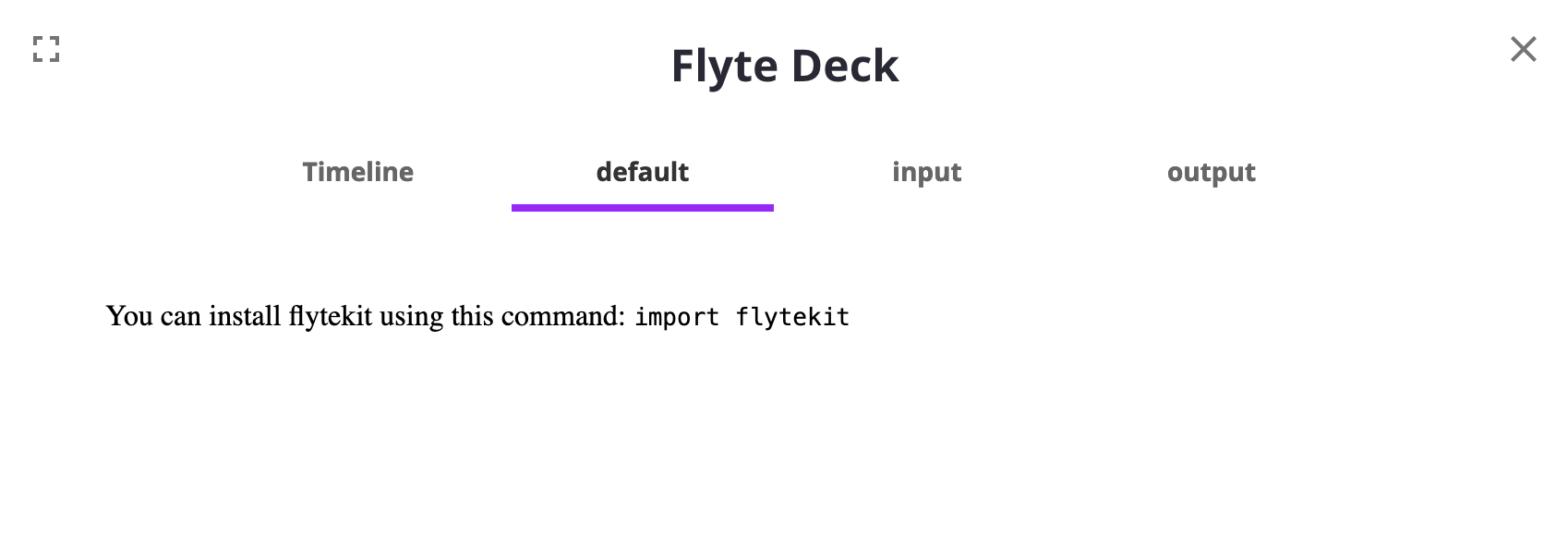
Box renderer¶
Groups rows of DataFrame together into a box-and-whisker mark to visualize their distribution.
Each box extends from the first quartile (Q1) to the third quartile (Q3). The median (Q2) is indicated by a line within the box. Typically, the whiskers extend to the edges of the box, plus or minus 1.5 times the interquartile range (IQR: Q3-Q1).
from flytekitplugins.deck.renderer import BoxRenderer
@task(enable_deck=True)
def box_renderer() -> None:
iris_df = px.data.iris()
flytekit.Deck("Box Plot", BoxRenderer("sepal_length").to_html(iris_df))
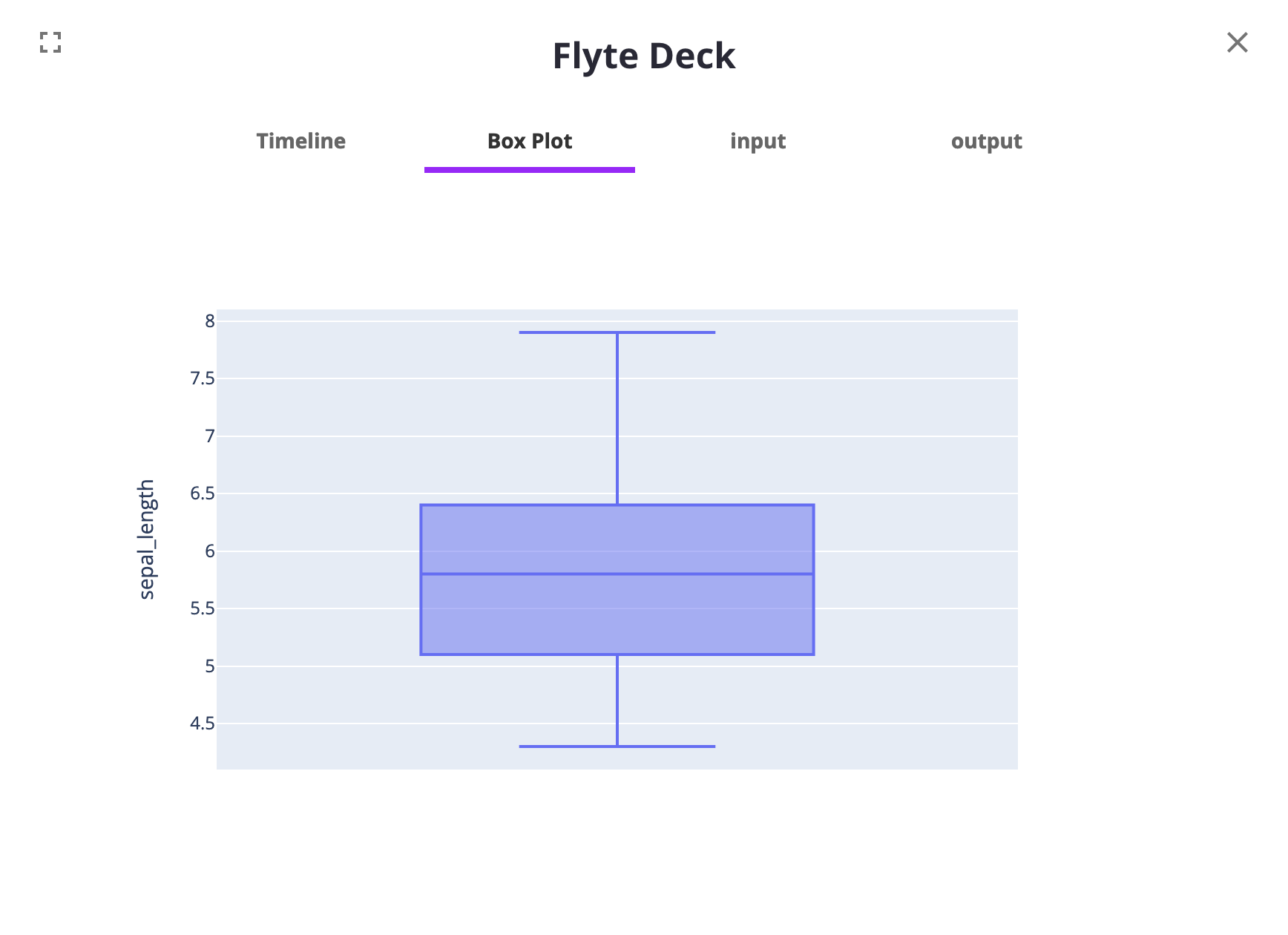
Image renderer¶
Converts a FlyteFile or PIL.Image.Image object into an HTML string,
where the image data is encoded as a base64 string.
from flytekit import workflow
from flytekit.types.file import FlyteFile
from flytekitplugins.deck.renderer import ImageRenderer
@task(enable_deck=True)
def image_renderer(image: FlyteFile) -> None:
flytekit.Deck("Image Renderer", ImageRenderer().to_html(image_src=image))
@workflow
def image_renderer_wf(
image: FlyteFile = "https://bit.ly/3KZ95q4",
) -> None:
image_renderer(image=image)
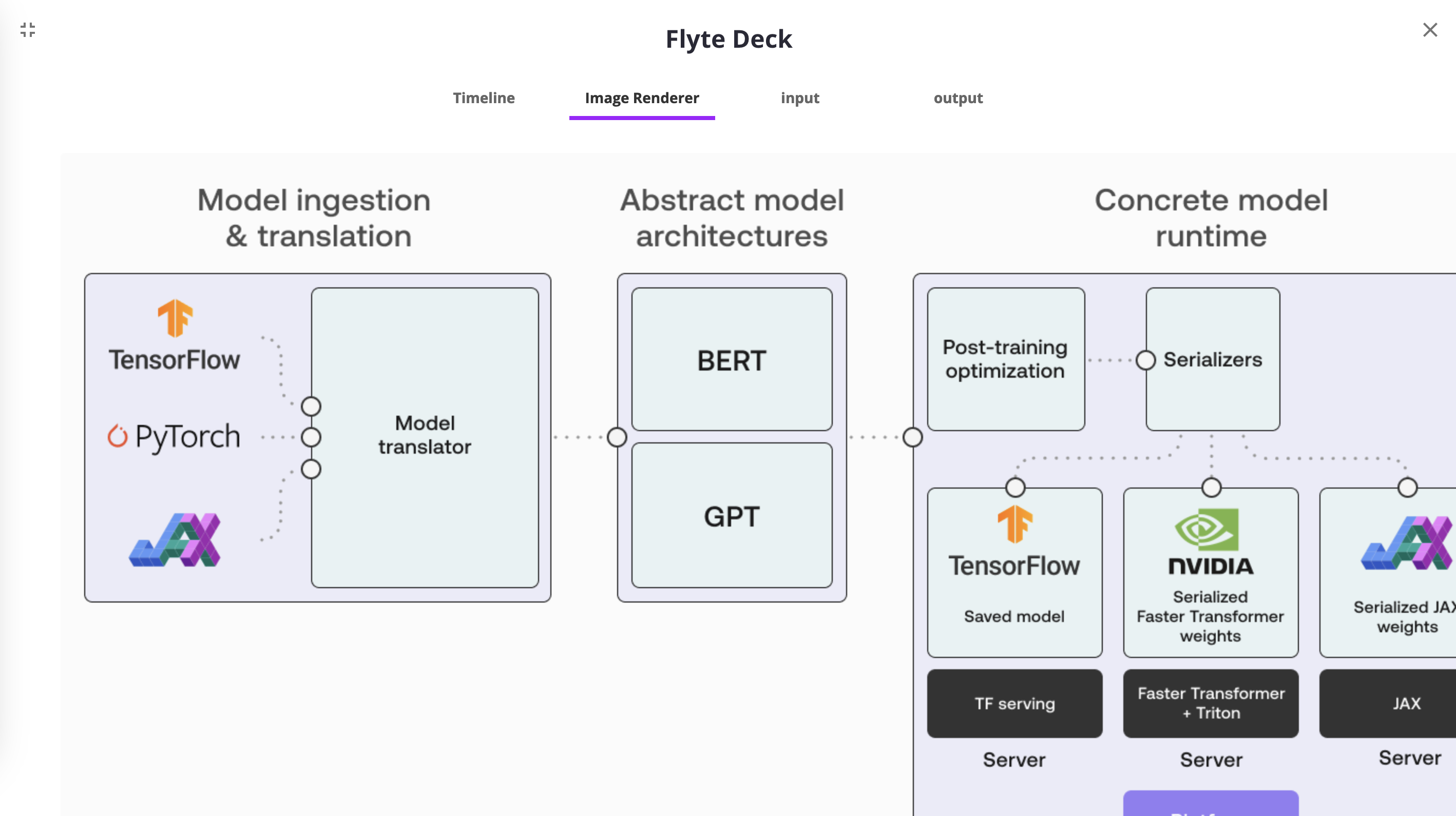
Table renderer¶
Converts a Pandas dataframe into an HTML table.
from flytekitplugins.deck.renderer import TableRenderer
@task(enable_deck=True)
def table_renderer() -> None:
flytekit.Deck(
"Table Renderer",
TableRenderer().to_html(df=pd.DataFrame(data={"col1": [1, 2], "col2": [3, 4]}), table_width=50),
)
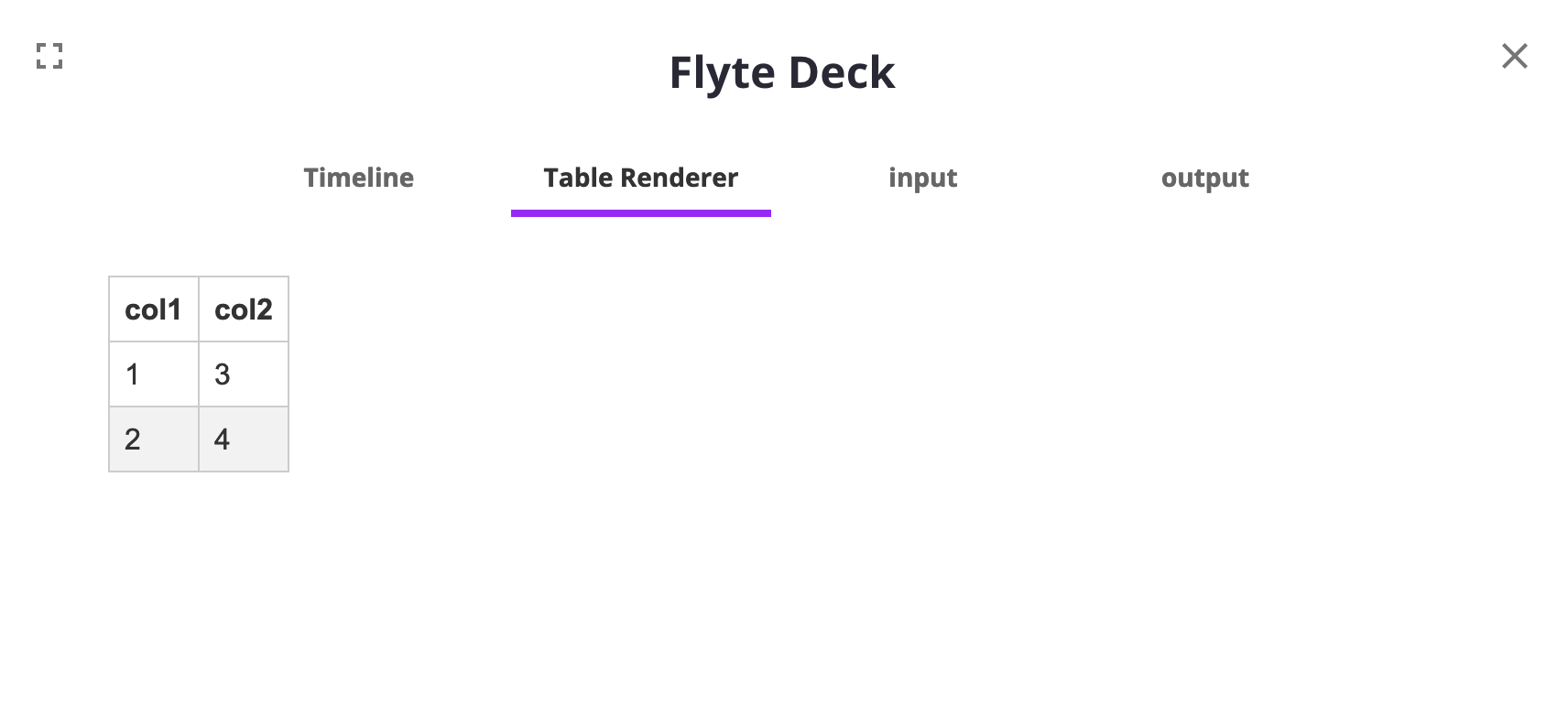
Source code renderer¶
Converts source code to HTML and renders it as a Unicode string on the deck.
import inspect
from flytekitplugins.deck.renderer import SourceCodeRenderer
@task(enable_deck=True)
def source_code_renderer() -> None:
file_path = inspect.getsourcefile(frame_renderer.__wrapped__)
with open(file_path, "r") as f:
source_code = f.read()
flytekit.Deck(
"Source Code Renderer",
SourceCodeRenderer().to_html(source_code),
)
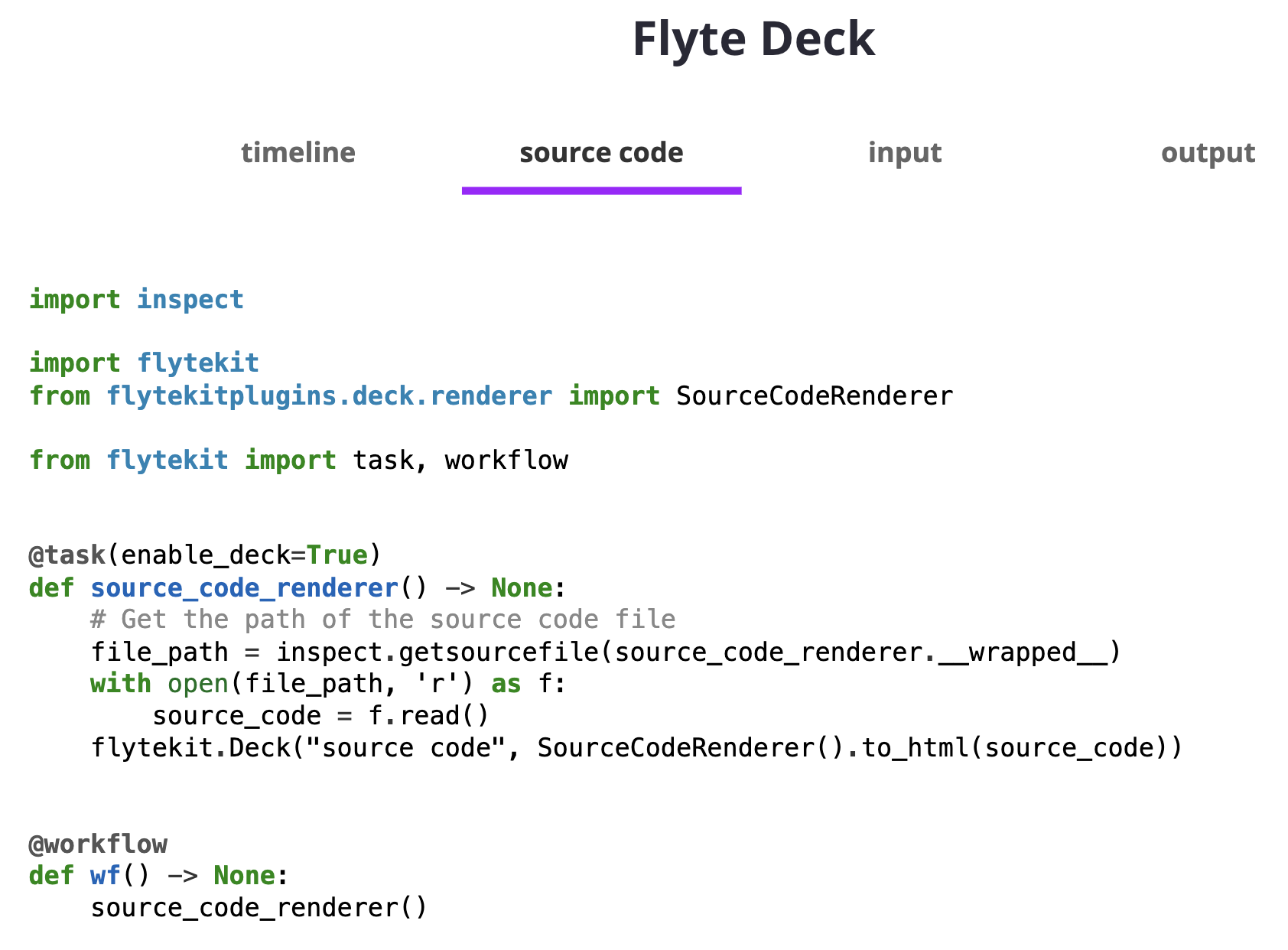
Contribute to renderers¶
Don’t hesitate to integrate a new renderer into renderer.py if your deck renderers can enhance data visibility. Feel encouraged to open a pull request and play a part in enhancing the Flyte deck renderer ecosystem!